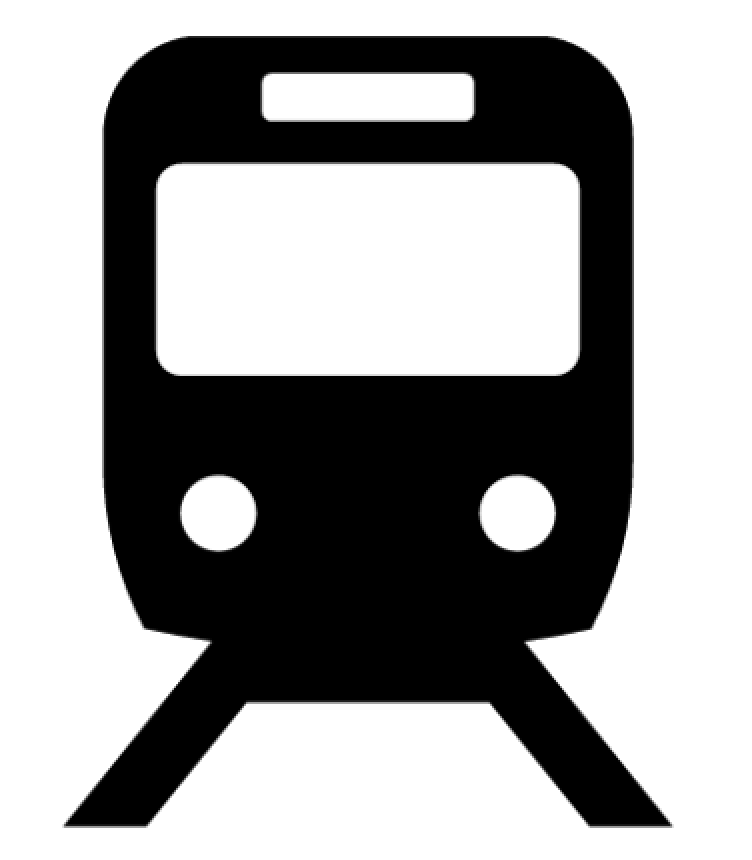|
Reading General
|
 |
« Reply #60 on: April 11, 2019, 15:50:11 » |
|
Interesting that all the intermediate stations are called halts except for Reading West. A service which terminates at a halt, that must be rare in railway operation, even if it was simply a railway term for a downgraded station rather than a designed halt.
|
|
|
|
|
 Logged
Logged
|
|
|
|
|
SandTEngineer
|
 |
« Reply #61 on: April 11, 2019, 16:01:43 » |
|
Bedwyn turnback siding wasn't installed until resignalling in 1978. Prior to that it had a single trailing crossover and Up Siding at the back of the Up Platform. Terminating trains had to reverse through the crossover and shunt to the Up Siding and start from there, although strictly it wasn't a passenger line.........
|
|
|
|
« Last Edit: April 11, 2019, 16:29:08 by SandTEngineer »
|
 Logged
Logged
|
|
|
|
|
grahame
|
 |
« Reply #62 on: April 11, 2019, 16:36:13 » |
|
Interesting that all the intermediate stations are called halts except for Reading West. A service which terminates at a halt, that must be rare in railway operation, even if it was simply a railway term for a downgraded station rather than a designed halt.
I think there were a number in Wales - Coryton Halt (still open as a terminus), Moss Halt near Wrexham, ... |
|
|
|
|
 Logged
Logged
|
Coffee Shop Admin, Chair of Melksham Rail User Group, TravelWatch SouthWest Board Member
|
|
|
|
Reading General
|
 |
« Reply #63 on: April 11, 2019, 16:45:50 » |
|
Bedwyn turnback siding wasn't installed until resignalling in 1978. Prior to that it had a single trailing crossover and Up Siding at the back of the Up Platform. Terminating trains had to reverse through the crossover and shunt to the Up Siding and start from there, although strictly it wasn't a passenger line.........
I just had a look at the layout on the old maps website, a complicated and time consuming move. So this siding was used as the starting platform? So was it a halt with three platforms? |
|
|
|
|
 Logged
Logged
|
|
|
|
|
jamestheredengine
|
 |
« Reply #64 on: April 11, 2019, 17:34:55 » |
|
Interesting that all the intermediate stations are called halts except for Reading West. A service which terminates at a halt, that must be rare in railway operation, even if it was simply a railway term for a downgraded station rather than a designed halt.
I think there were a number in Wales - Coryton Halt (still open as a terminus), Moss Halt near Wrexham, ... And even before 1931, when passenger services on the former Cardiff Railway were curtailed at Coryton Halt, the terminus of that line was still a halt, viz Rhydyfelin Halt Low Level. Disappointingly, the weird little branch off the Vale of Neath in Aberdare used the style "crossing" rather than "halt"; otherwise the Black Lion Crossing to Cwmaman Crossing service would have been a service with both termini at halts. |
|
|
|
|
 Logged
Logged
|
|
|
|
|
SandTEngineer
|
 |
« Reply #65 on: April 11, 2019, 21:08:14 » |
|
Bedwyn turnback siding wasn't installed until resignalling in 1978. Prior to that it had a single trailing crossover and Up Siding at the back of the Up Platform. Terminating trains had to reverse through the crossover and shunt to the Up Siding and start from there, although strictly it wasn't a passenger line.........
I just had a look at the layout on the old maps website, a complicated and time consuming move. So this siding was used as the starting platform? So was it a halt with three platforms? Yes. I've got a 1970 photograph somewhere. I'll try and dig it out and post it up here. |
|
|
|
|
 Logged
Logged
|
|
|
|
|
bobm
|
 |
« Reply #66 on: April 11, 2019, 21:28:22 » |
|
Another trip to the garage then...  |
|
|
|
|
 Logged
Logged
|
|
|
|
|
|
|
IndustryInsider
|
 |
« Reply #68 on: April 12, 2019, 13:12:49 » |
|
Here's the timetable from 51 years ago.
I'll see if I can find anything for intermediate years.
Summer 1989 has table 116 as "London and Reading -> Westbury and Birmingham" so would be a major scan to post it all here. Bedwyn served by a variety of terminating locals from Reading and from Newbury, with a single westward departure at 19:11. In the other direction, the only arrival from the west at 07:17.
Going back to 1983, hardly yesterday, but still fairly recently, it wasn't much better than Graham's example from 51 years ago. London commuters had a choice of an 06:40 changing at Newbury to arrive at 08:20 and a slow direct train at 07:15 arriving 08:45. Coming home was slightly better with a direct train at 18:25 arriving at 19:45. Unless you were returning on a Friday, however, in which case it took 15 minutes longer! Off peak travellers to London had no direct trains at all during the whole week, just a DMU▸ service roughly every two hours all stations to Reading where they could change for a fast service, typically taking over 90 minutes. There was one train serving Bedwyn on a Sunday, in the evening. Now, compare that with December, with an IET▸ direct every hour taking between 61 and 72 minutes. "It was much better under British Rail in the old days..."  |
|
|
|
|
 Logged
Logged
|
To view my GWML▸ Electrification cab video 'before and after' video comparison, as well as other videos of the new layout at Reading and 'before and after' comparisons of the Cotswold Line Redoubling scheme, see: http://www.dailymotion.com/user/IndustryInsider/ |
|
|
|
SandTEngineer
|
 |
« Reply #69 on: April 12, 2019, 15:55:50 » |
|
I still don't understand why the peak IC▸ services to the far Southwest have to make calls at the 'Halts'. One now even stops at Hungerford, and thats following another barely 20 minutes before.....  |
|
|
|
« Last Edit: April 12, 2019, 17:40:40 by SandTEngineer »
|
 Logged
Logged
|
|
|
|
|
grahame
|
 |
« Reply #70 on: April 12, 2019, 18:18:50 » |
|
I still don't understand why the peak IC▸ services to the far Southwest have to make calls at the 'Halts'. One now even stops at Hungerford, and thats following another barely 20 minutes before.....  Because the franchise (see http://www.firstgreatwestern.info/coffeeshop/index.php?topic=21164) tells them too   LONDON PADDINGTON – PLYMOUTH - PENZANCE
[snip]
Kintbury, Hungerford, Bedwyn Mondays to Fridays
(a) Two services departing London Paddington between 1600 and 1900 shall call at Hungerford and Bedwyn. One service departing London Paddington between 1600 and 1900 shall call at Kintbury.
(b) The service specified in paragraph 2.1(f) shall call at Hungerford. |
|
|
|
|
 Logged
Logged
|
Coffee Shop Admin, Chair of Melksham Rail User Group, TravelWatch SouthWest Board Member
|
|
|
|
SandTEngineer
|
 |
« Reply #71 on: April 12, 2019, 18:36:00 » |
|
I still don't understand why the peak IC▸ services to the far Southwest have to make calls at the 'Halts'. One now even stops at Hungerford, and thats following another barely 20 minutes before.....  Because the franchise (see http://www.firstgreatwestern.info/coffeeshop/index.php?topic=21164) tells them too   LONDON PADDINGTON – PLYMOUTH - PENZANCE
[snip]
Kintbury, Hungerford, Bedwyn Mondays to Fridays
(a) Two services departing London Paddington between 1600 and 1900 shall call at Hungerford and Bedwyn. One service departing London Paddington between 1600 and 1900 shall call at Kintbury.
(b) The service specified in paragraph 2.1(f) shall call at Hungerford. I was referring to the 0451 Plymouth to Paddington which isn't in the list. |
|
|
|
« Last Edit: April 12, 2019, 18:44:30 by SandTEngineer »
|
 Logged
Logged
|
|
|
|
|
grahame
|
 |
« Reply #72 on: April 12, 2019, 18:40:17 » |
|
I was referring to the 0451 Plymouth to Paddington which isn't in your list.
2.1(f). Between 0430 and the Early Service, one service shall be provided to London Paddington. 3.4 (b) The service specified in paragraph 2.1(f) shall call at Hungerford. |
|
|
|
|
 Logged
Logged
|
Coffee Shop Admin, Chair of Melksham Rail User Group, TravelWatch SouthWest Board Member
|
|
|
|
SandTEngineer
|
 |
« Reply #73 on: April 12, 2019, 18:47:38 » |
|
I was referring to the 0451 Plymouth to Paddington which isn't in your list.
2.1(f). Between 0430 and the Early Service, one service shall be provided to London Paddington. 3.4 (b) The service specified in paragraph 2.1(f) shall call at Hungerford. OK, I must have read it differently thinking it was the 0529 Plymouth to Paddington that should call. A bit complex those overlapping SLCs▸ ...... I still don't understand why such a small station should have such a service when there are pleanty of alternatives. I think I'll stick to posting on S&T▸ matters. I'll go and have a lie-down now  |
|
|
|
« Last Edit: April 12, 2019, 19:19:57 by SandTEngineer »
|
 Logged
Logged
|
|
|
|
|
grahame
|
 |
« Reply #74 on: April 12, 2019, 19:09:18 » |
|
OK, I must have read it differently thinking it was the 0529 Plymouth to Paddington that should call. A bit complex those overlapping SLCs▸ ...... I still don't understand why such a small station should have such a service when there are pleanty of alternatives. I think I'll stick to posting on S&T▸ matters. I'll go and have a lie down now  Sorry - my answer came across a bit too crisp. I believe that the 05:29 is what is known as the "early service" - the start of trains running to a pattern - and the 04:51 is the extra train before the early service that's required to call at Hungerford. But really my overall answer is poor - like telling the children "because I say so"; a cop-out. In this case "because the DfT» say so". So why do the DfT say so?The 'early service' has to arrive into Paddington by 09:15, so that's too late for 9 to 5 working people, hence putting a stop in it - the 05:29 - would not fulfil an express commute from Hungerford, which having a stop in the 04:51 - the train that runs before the early service will. At that horrid early hour from Plymouth (04:51) I don't think the DfT expects huge crowds so the 04:51 is likely to have capacity. Hungerford is give a nice, juicy express train to London for commuters, many of whom may be senior civil servants (surely not!), and others will be keen voters in what at one point in the not too distant past was a parliamentary seat that swapped from Conservative to Liberal and back again. So ... popular thing to do, makes for good commute, on a train that otherwise might be a bit quiet. |
|
|
|
|
 Logged
Logged
|
Coffee Shop Admin, Chair of Melksham Rail User Group, TravelWatch SouthWest Board Member
|
|
|
|





